Considering a new pet for your kids? Nothing tops “man’s best friend,” aka a furry canine!
Dogs are loyal, provide unconditional love, and are sure to liven up your home with their adorable antics.
But aside from being dependable companions, dogs can also help children stay active, build their confidence, and teach them all about responsibility.
Research – including this 2020 study published in Journal of Clinical Child & Adolescent Psychology – have even shown that a four-legged pal can help your kid’s emotional wellbeing!
There’s just no debate that dogs make the best of friends for kids
. However, some breeds (and mixes) make better companions for children than others. We’ll share which dog breeds are best for kids, and also discuss exactly what makes them so pawfect, below.
We’ve organized our breed recommendations into sizes — small, medium, and large — since this is one of the major considerations when choosing a new companion.
As a rough guideline, we consider dogs “small” if they weigh less than 30 pounds, “medium” if they weigh between 30 and 70 pounds, and “large” if they weigh more than 70 pounds.
Keep in mind that some of the breeds we mention don’t fit easily into one size category. This may be because their weight or height can vary significantly, or they come in different size varieties like toy and miniature.
In cases like these, we’ve just used our best judgment for size-class placement and have described how their size can vary.
Best Small Dogs for Kids
We actually have an entire guide detailing the best small dogs for kids already, but highlighting these petite pooches is something we don’t mind repeating!
Small dogs fit snugly in apartments, won’t hog the couch (though your lap is a different story…), and are ideal companions for children that know not to play rough.
Beagle
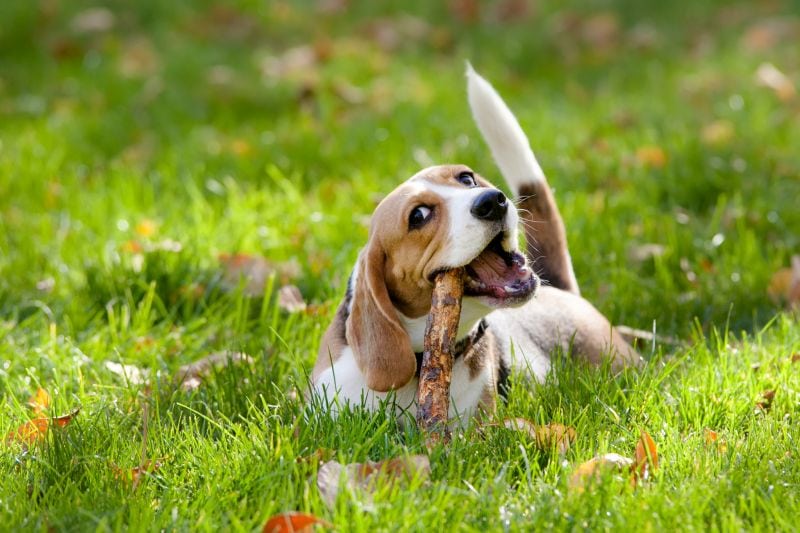
Beagles are curious, friendly, and loving companions.
They’re generally easygoing, which makes them suitable for kids of all ages, and they also love putting their nose and brain to good use, whether through nosework, puzzle toys, or fierce games of fetch.
Be warned though: Beagles love the sound of their own voice, so as one of the more vocal dog breeds out there, thin-walled apartments are a no-go. They can also be pretty stubborn! But they’ll thrive with an owner that is willing to dedicate plenty of time to their training and care.
Cavalier King Charles Spaniel
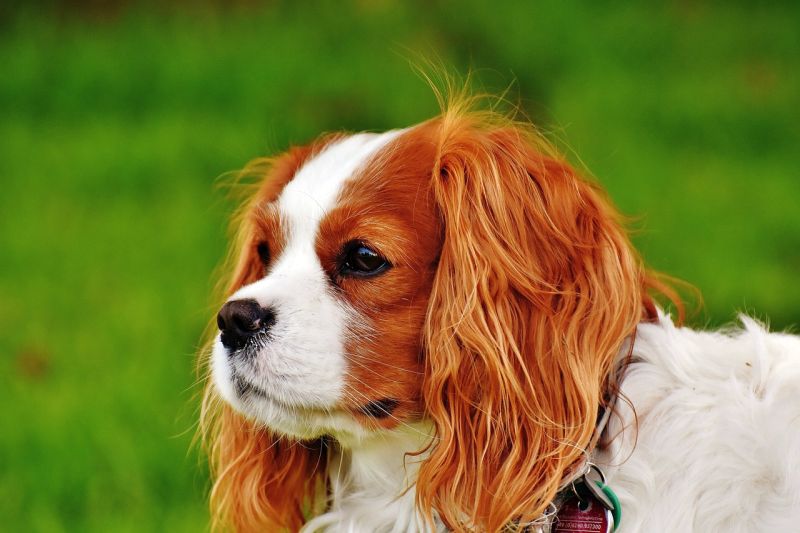
Originally bred to be “comforter dogs,” cavalier King Charles spaniels will bless your household with an endless amount of affection and cuddles. They love nothing more than being by their family’s side and will truly help kids feel safe, reassured, and loved.
These cute doggos are also adaptable. They can happily match your lifestyle, whether easygoing or active, and will feel at home in even the snuggest of apartments.
King Charles spaniels do tend to suffer from separation anxiety though, so they’re not ideal for people who work long hours.
Bichon Frisé
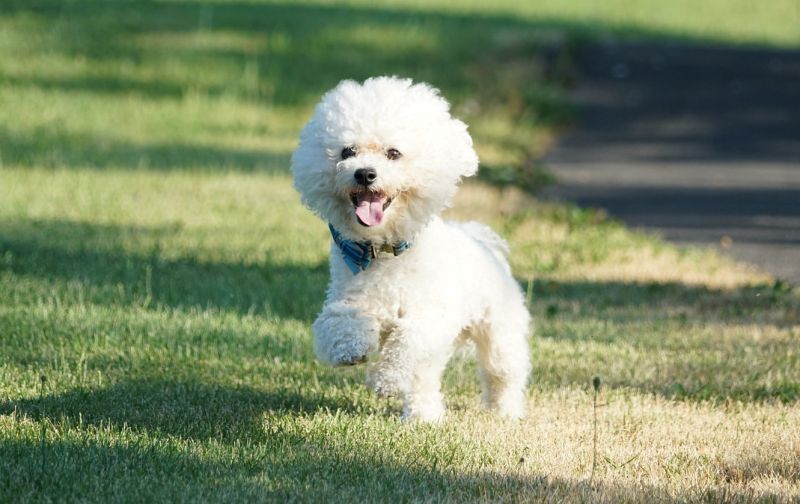
If there’s one breed that could soften Cruella’s heart, it would definitely be the bichon frisé.
The pooch looks exactly like a teddy bear, has the most irresistible, aww-worthy smile, and boasts an amiable demeanor that very few dogs can match.
Bichon frisés also see everyone — yes, even your grumpy next door neighbor — as a friend. All these qualities make bichon frisés (as well as some bichon fisé mixes) the perfect companion for kids. They’re also considered a “hypoallergenic” breed (more on this later).
Puli
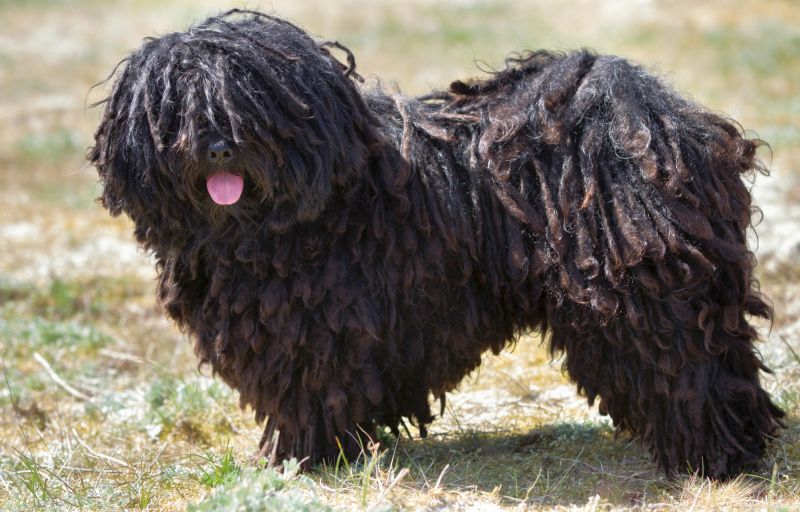
Pulis are friendly, energetic, and playful, making them apt for kids looking for an active but compact sidekick.
These curly-haired dogs are also fearless and will put their life on the line to protect their loved ones. They can be wary around strangers, but proper socialization from an early age will ensure this wariness stays at a healthy level.
Pulis are known for their unique, shaggy locks. Their coat is typically black, though it can also be tan, gray, cream, and white. Pulis (who are also called Pulik by some) do need regular grooming to keep their fur in good condition. However, those who can take the time to care for their coats will be blessed with a gorgeous friend!
Dachshund
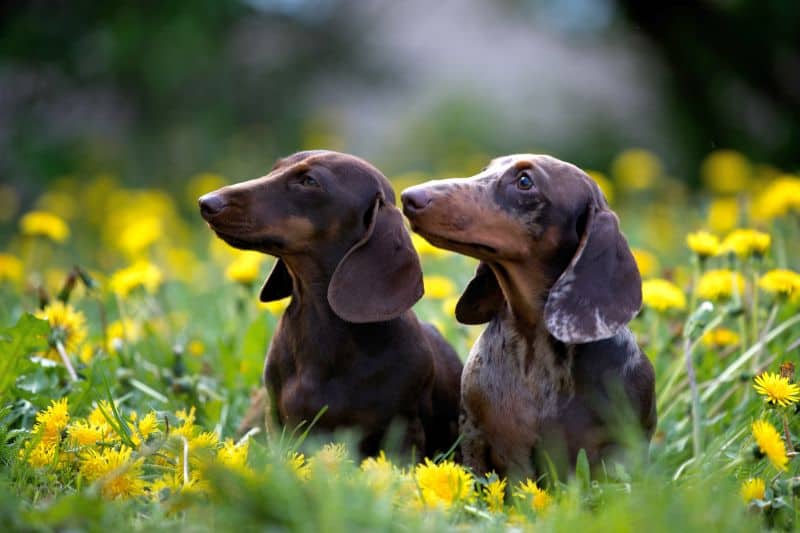
Dachshund dogs, or as they’re also known, wiener dogs, make great playmates for kids thanks to their comical antics, spunky attitudes, and boundless energy.
They come in two different sizes: miniature and standard. Miniature dachshunds weigh less than 11 pounds, while standard dachshunds weigh between 16 and 30 pounds.
Dachshunds (and Dachshund mixes) are clever and devoted to their families, though these doggos are notoriously stubborn (and often difficult to housetrain). They’ll need a loving yet strong-willed owner to match their equally strong-willed attitudes.
Families with toddlers should also avoid this breed. Despite their larger-than-life personalities, dachshunds have fragile bodies and can easily get injured from roughhousing.
Coton de Tulear
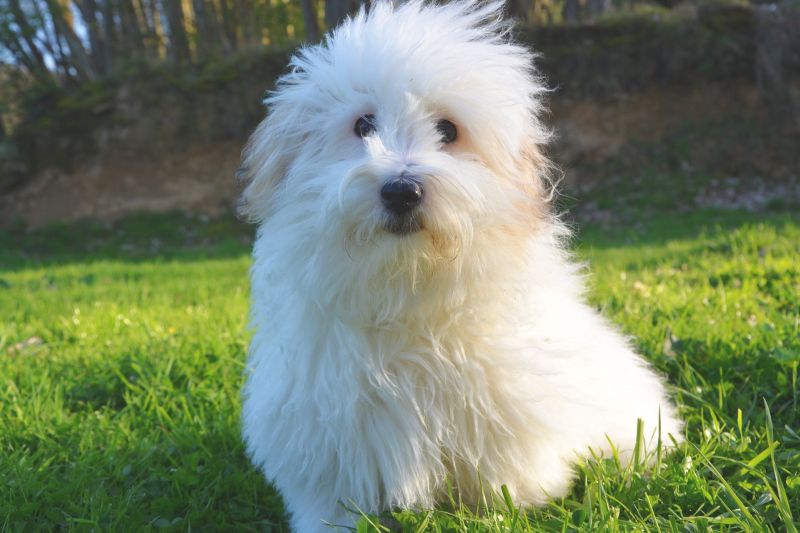
Coton de Tulears are loyal, even-tempered dogs who are friendly with everyone they meet. The “coton” in their name refers to their white, cotton-like coat, which is one of their most defining features.
While small, coton de Tulears are sturdy and extremely tolerant of young children. They also form strong bonds, love to goof around, and won’t skip out on any opportunity to play or snuggle.
They have one of the longest canine lifespans out there too, with some cotons living up to 19 years!
Boston Terrier
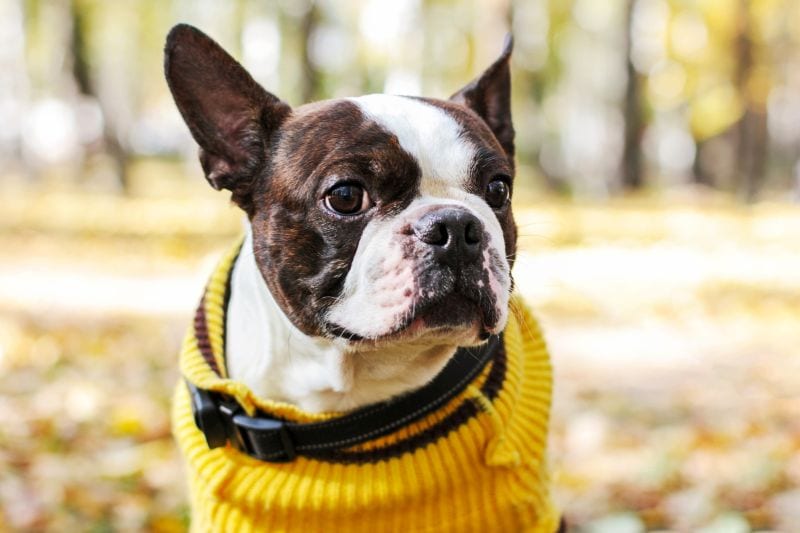
This charming pooch was originally developed to be a loyal companion dog.
So, it goes without saying that he’ll feel right at home in a family with kids who can shower him in love, affection, and attention. Aside from being people-oriented, the Boston terrier is also charming, playful, and happy-go-lucky.
Boston terriers reach 25 pounds or so and sport a stylish, tuxedo-like coat. Their fur is easy to brush and sheds minimally, making the breed ideal for families after a dog who is low-maintenance on the grooming front.
While endearing, Bostons are unfortunately prone to health issues due to their physical anatomy as a brachycephalic (flat-faced) dog breed. They’ll need an owner that can afford the potentially high cost of their care.
Rat Terrier
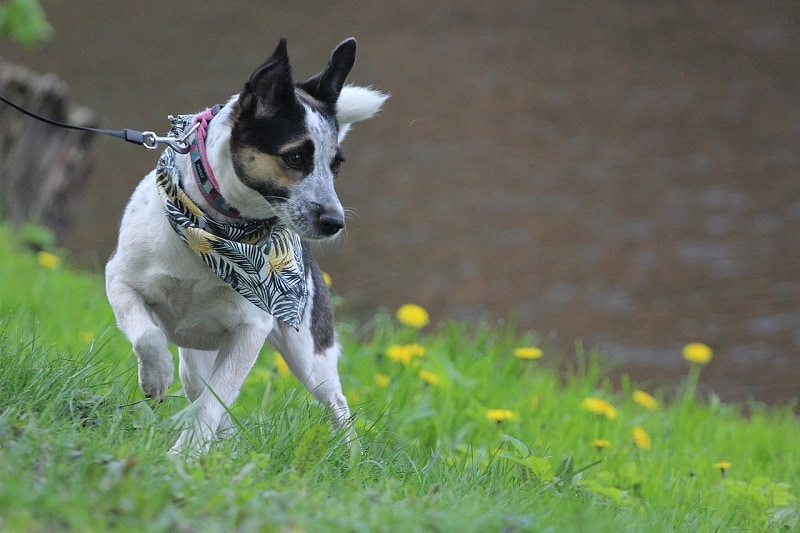
The rat terrier is a compact but agile ratter dog who grows up to 13 or 18 inches tall, depending on size (miniature or standard).
These canines form strong bonds with their families, love the outdoors, and thrive with plenty of play sessions. They’re also patient and sturdy enough to tolerate the rough-and-tumble nature of young kids.
Rat terriers do have high prey drives and strong chasing instincts, so they’ll need to be kept on a leash in areas where small animals roam freely. However, they can happily live in households with other pets if they’re raised together from a young age.
Best Medium-Sized Dogs for Kids
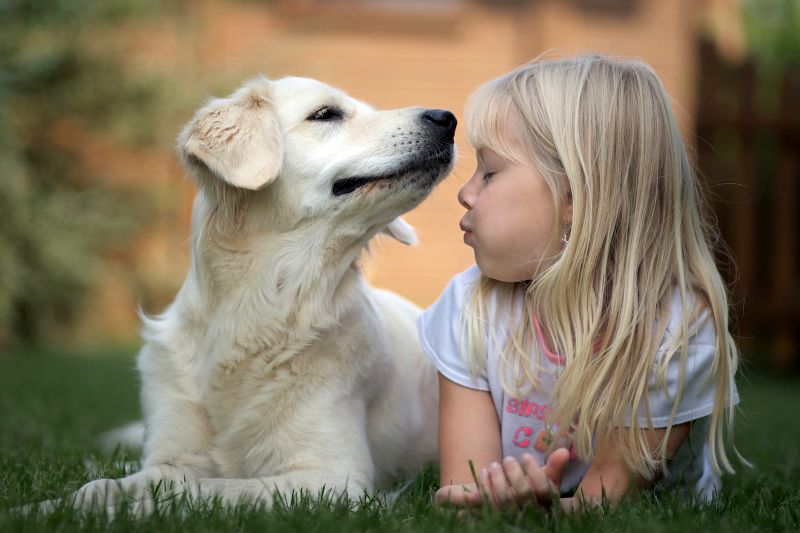
A medium-sized dog has the robustness of a large dog in a more manageable, affordable, and cuddly form! Here are our top picks:
Golden Retriever
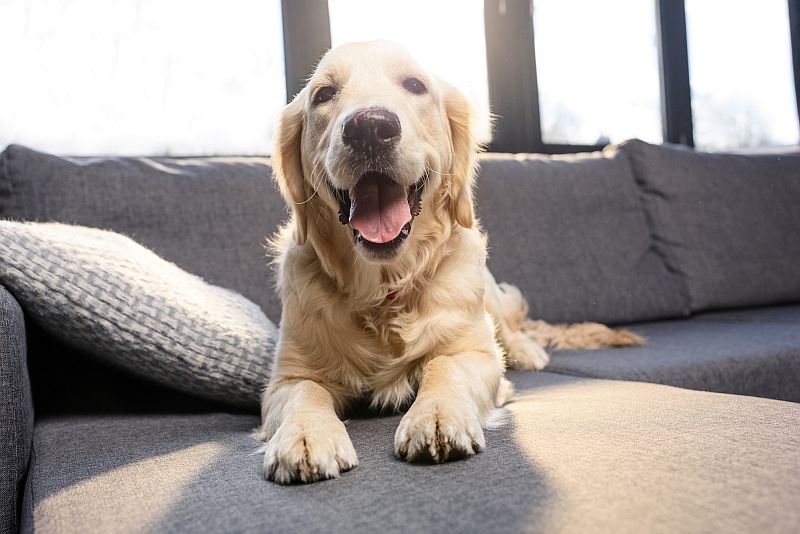
Golden retrievers, more commonly known as “goldies,” are trustworthy, happy-go-lucky dogs who are great with young children and other pets. They grow up to 24 inches tall and weigh between 55 and 75 pounds.
Goldies are responsive to training, thanks to their intelligence and eagerness to please, and they can play fetch for hours on end without getting bored. They also have insanely soft and warm coats, which is something kids will definitely find comforting.
While exuberant, young goldies can be a bit too overenthusiastic and have been known to jump and bounce about. So, stick to an adult goldie if you have little ones.
Labrador Retriever
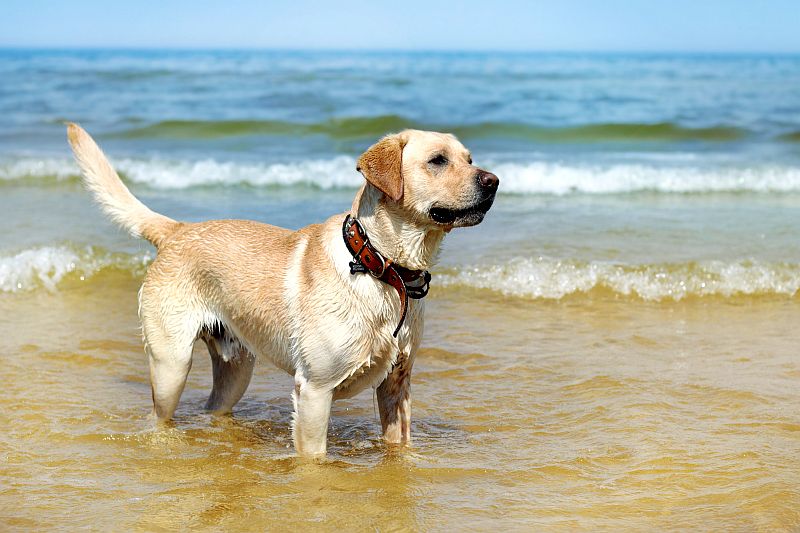
The Labrador retriever has held the top spot for the most popular dog breed since 1991, and there’s a pretty good reason for it: This canine has all the qualities that make a perfect best friend. He’s extremely friendly, eager to please, and loves playing and cuddling in equal measures.
Labs are also incredibly smart and can learn just about any task you throw at them, ranging from obedience cues and commands to tricks like “roll over” and “play dead.”
They do require a lot of exercise, at least an hour per day, but this makes them ideal for high-energy kids.
Irish Setter
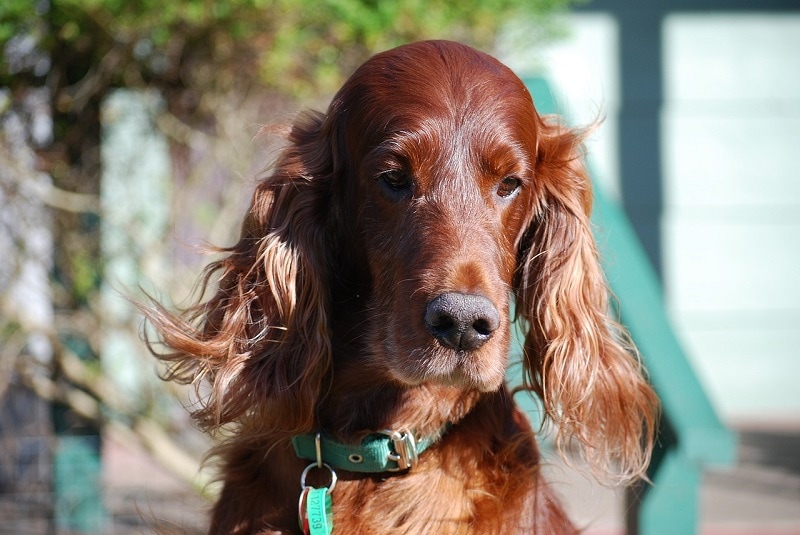
Lively, intelligent, work-focused — the Irish setter has made a name for himself as being one of the flashiest gundogs out there. But beyond the field, he’s also known for being a great family companion.
He’s affectionate, gentle, and can keep kids entertained for hours on end with his clownish side!
Irish setters (and most Irish setter mixes) are always down for impromptu games of fetch or tug-of-war. He also loves sticking his nose into scent games. However, he can be strong-willed and often has a mind of his own, so he’ll need an owner that can provide consistent training.
Check out some of the best Irish setter dog foods!
Boxer
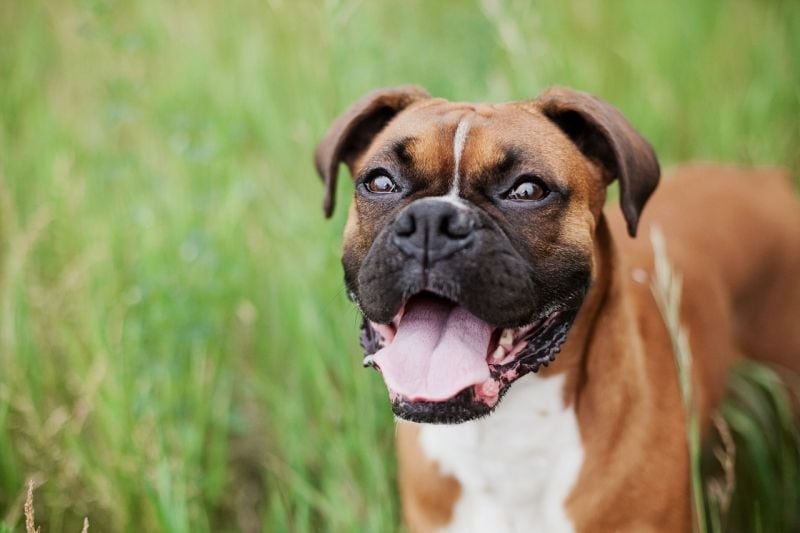
Boxers might look tough, but they’re gentle, fun-loving, and affectionate at heart. What makes them particularly ideal companions for kids though is their protective natures and incredible patience.
Mature boxers weigh between 50 and 80 pounds and stand as high as 25 inches. They require minimal grooming, but as high energy pooches, boxers and boxer mixes need plenty of mental stimulation and exercise to stay happy.
Poodle
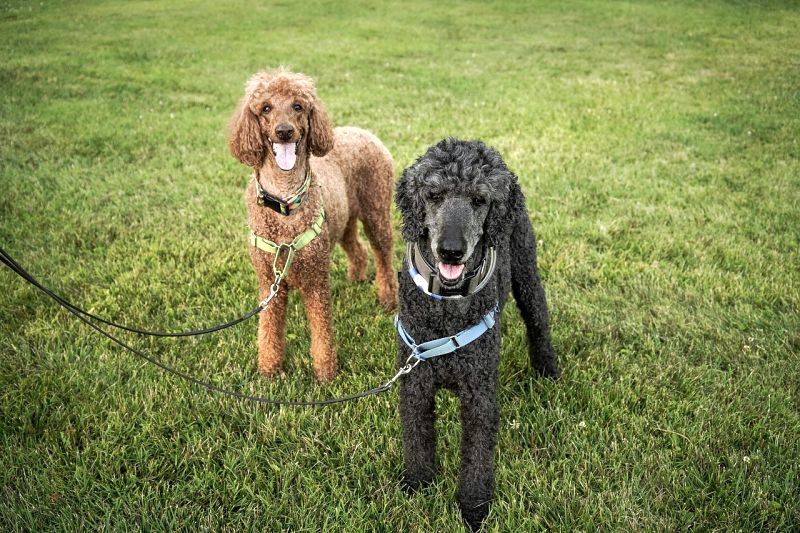
Poodles are exceptionally bright, even-tempered dogs who make excellent family pets, as long as they’re given plenty of attention. They’re famously attuned to their owner’s feelings, can pick up commands quickly, and are polite with strangers.
Poodles come in three different sizes — standard, miniature, and toy — and a whole range of different colors. Toy and miniature poodles are ideal for apartments (and would better be classified as “small dogs”), while standard poodles are better suited to households with backyards.
Despite their incredibly fluffy coats, poodles rarely shed and are considered a “hypoallergenic breed.” They do, however, need a lot of grooming to keep their fur in good condition.
Basset Hound
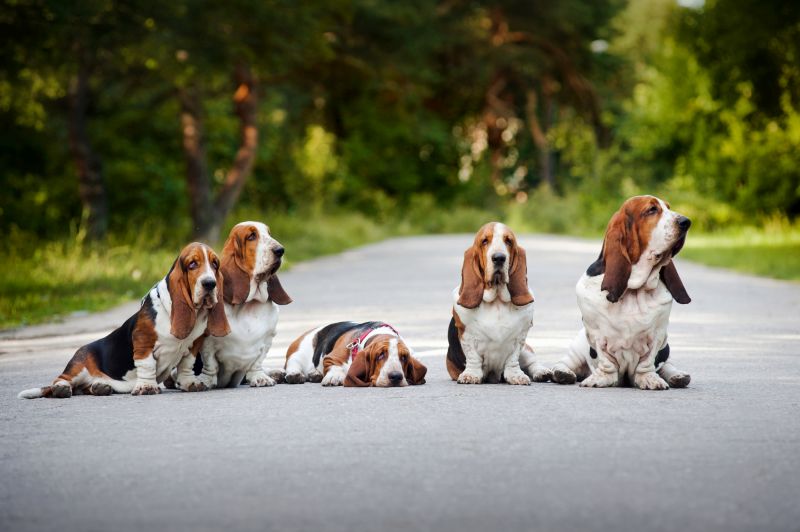
The basset hound’s personality is just as sweet as his endearing gaze. He’s gentle, patient, and can see a friend in everyone, including other animals.
Basset hounds are particularly tolerant of children, and thanks to their stamina and sturdy builds, they can keep up with even the most rambunctious kids.
Just understand that basset hounds like to do things their own way and are slow to housebreak. But if you’re willing to work through their stubbornness, Basset hounds and Basset hound mixes make devoted, loving companions that’ll give plenty of affection (and slobber!).
Brittany
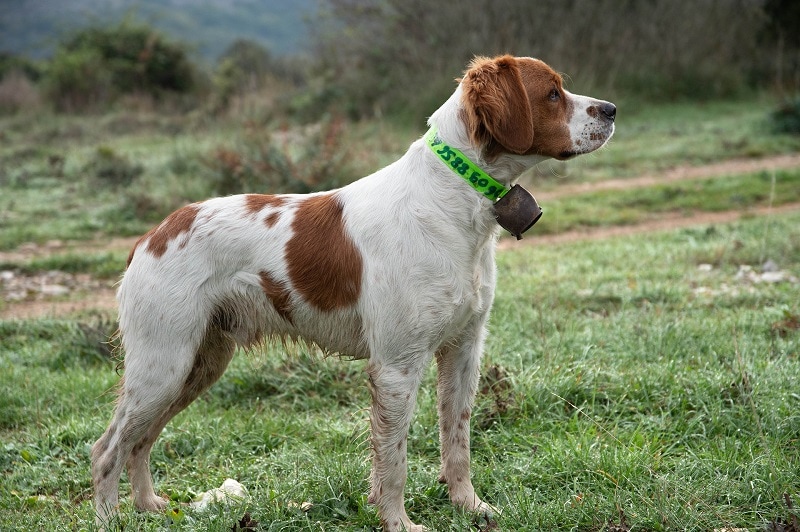
Brittanys are spritely, athletic gundogs who love spending time outdoors. Their energetic natures, combined with their passion for agility sports, makes them well-suited to active families (or adventurous kids).
While fairly resilient, Brittanys don’t respond well to raised voices or harsh training methods. Stick to a gentle but firm approach with plenty of treats and encouragement.
Bulldog
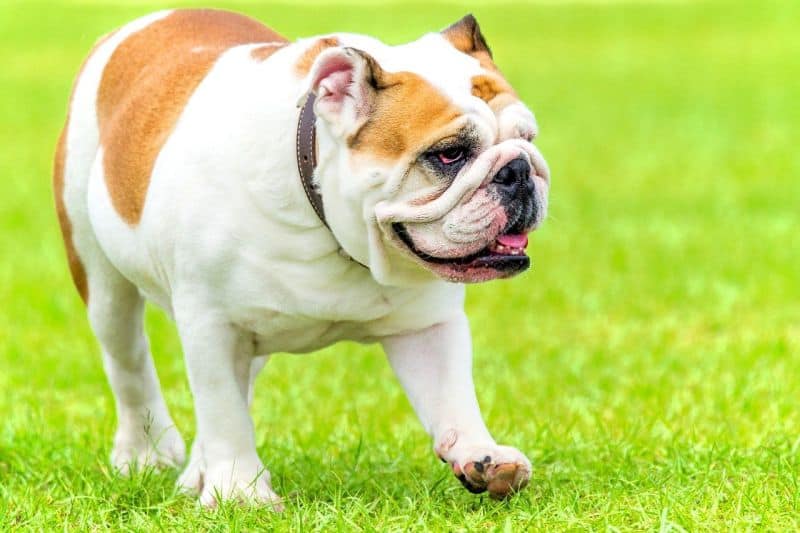
Bulldogs might have a permanent scowl on their face, but as the saying goes, looks can be deceiving! At heart, these pooches are friendly, compassionate, and courageous, and they love nothing more than hanging out with their humans. They also have a particular affinity for kids and are exceptionally tolerant.
Bulldogs make wonderful additions to families looking for a laidback, low-energy dog breed. They typically only need around 40 minutes of exercise per day to feel satisfied and content. However, bulldogs are prone to several health issues, so make sure you’re well-informed before considering this breed.
Greyhound
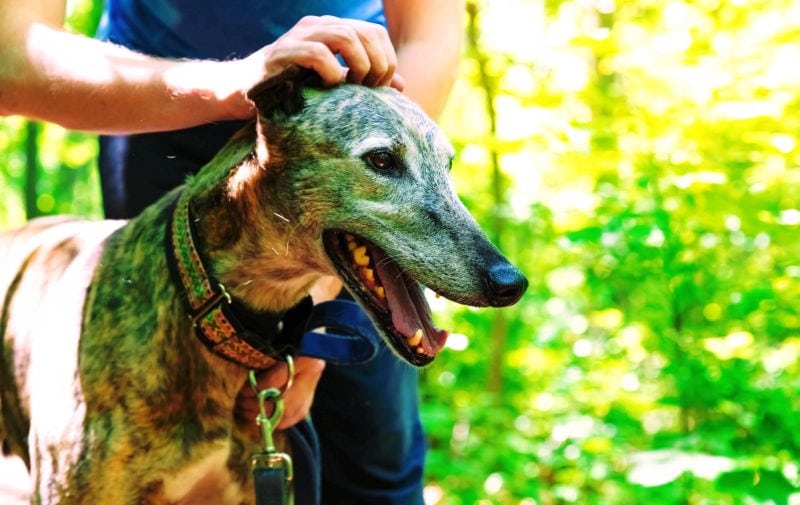
Greyhounds are famous for being the fastest dogs out there, but they’re also awesome family companions too!
These canines love to play, cuddle, and are incredibly gentle around kids. They’re also fairly quiet and easygoing, making them ideal for apartments.
Some greyhounds can be timid around strangers.
However, early socialization as puppies can help them become outgoing adults. Greyhounds come in various colors, including fawn, brindle, and white, and they grow up to 28 inches tall. Their coats are also easy to groom and don’t shed much.
Portuguese Water Dog
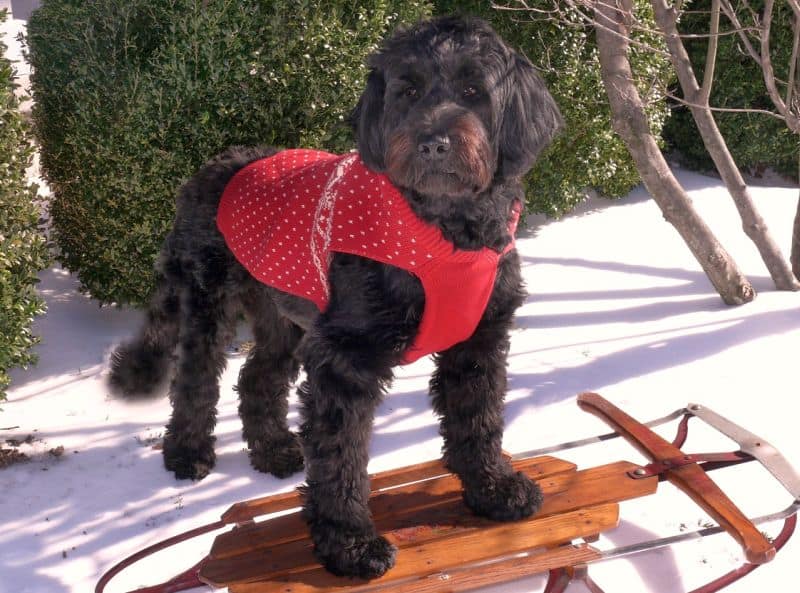
Adventurous, athletic, and enthusiastic — this shaggy pup can easily keep up with a kid’s bouncy energy. He also has a natural affinity for the water, making him the perfect playmate for children who love to swim or partake in watersports like paddleboarding.
Portuguese water dogs are intelligent, eager to please, and love learning new things. However, you’ll need to make training sessions challenging to prevent them from getting bored.
Best Large Dogs for Kids
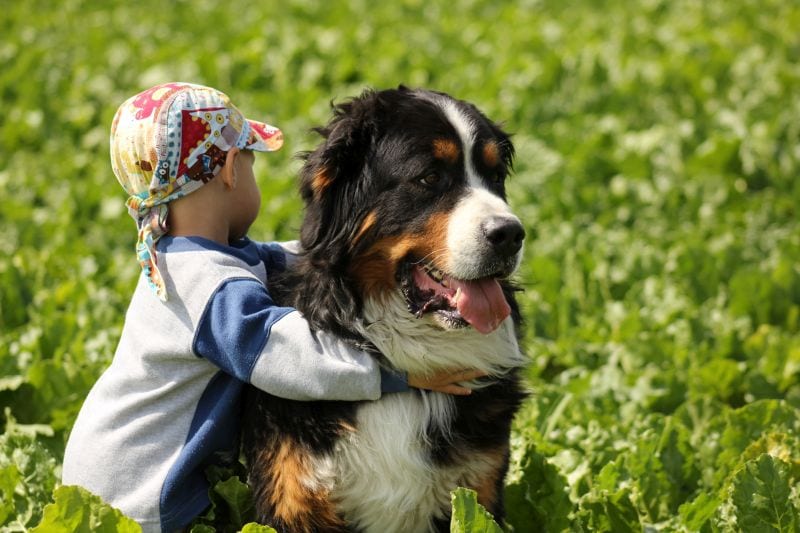
These gentle giants are sure to make wonderful additions to any family home. Just beware: They often forget they’re not lapdogs!
Newfoundland
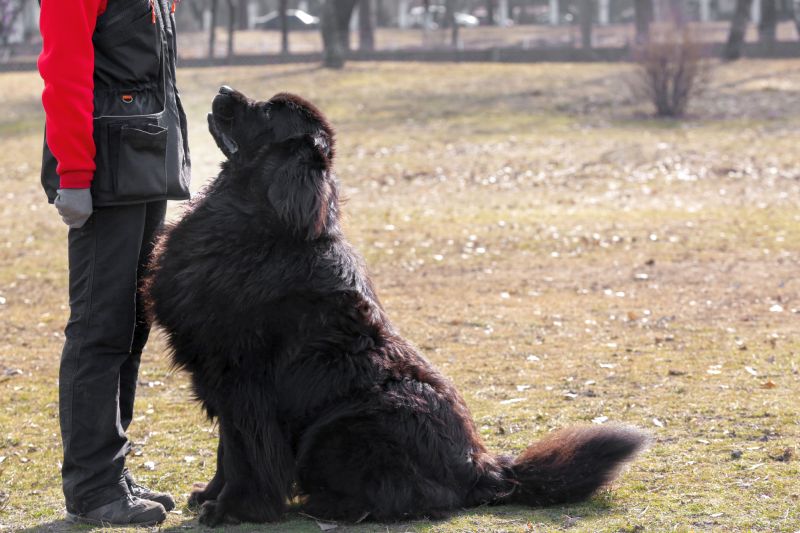
These big ol’ softies are a total delight to have around the home, thanks to their patient, gentle, and loving personality. They’re also easy to train and form strong bonds with their favorite humans.
Newfoundlands and Newfoundland mixes tend to be fairly laidback dogs and only require 30 to 60 minutes of exercise per day. They’re also super cuddly, so they’re sure to help kids feel safe, comforted, and reassured. However, be prepared for a whole lot of drool and fluff!
Bernese Mountain Dog
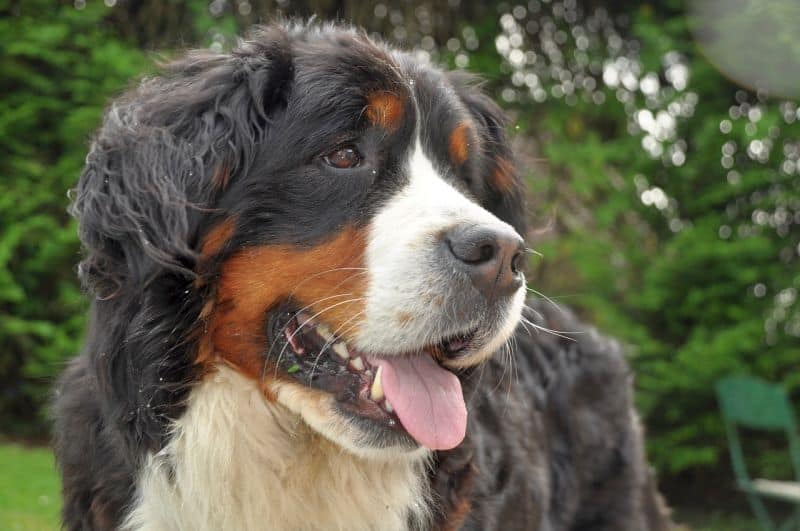
This sweet canine is known for his gorgeous tri-colored coat, muscular build, and endearing gaze. He lives to please his family, and while typically easygoing, he is more than happy to dive right into a play session.
Bernese mountain dogs and Bernese mountain dog mixes are responsive to training and get along well with other pets. They can happily live in cold climates thanks to their thick coats, but they do require a lot of grooming.
Great Pyrenees
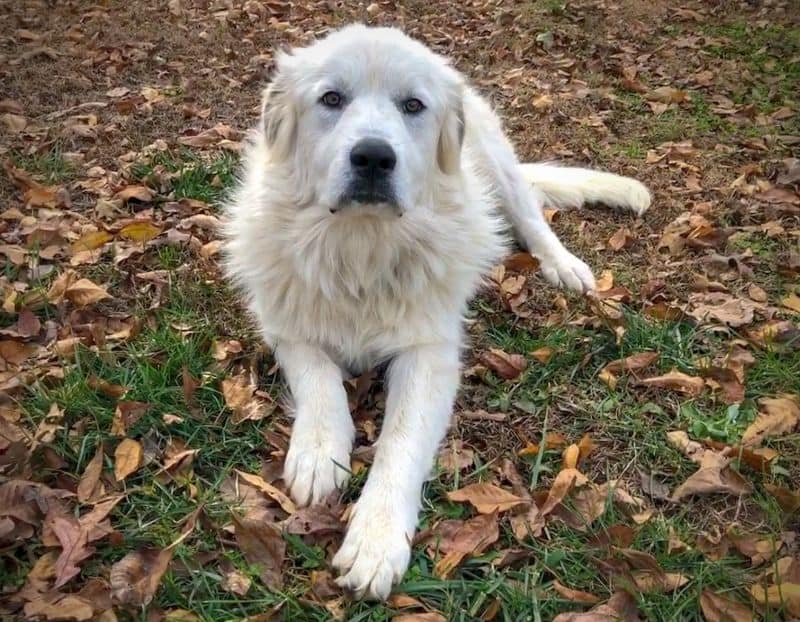
From a distance, this pooch could easily be mistaken for a giant, fluffy cloud. But up close? You’re met with a powerful working dog that’ll go to great lengths to protect his home and family, all while offering heaps of affection.
The great Pyrenees is nurturing, well-mannered, and calm, but he is independent-minded and tends to be stubborn. He’ll thrive with an owner that can be patient but firm with him.
Great Dane
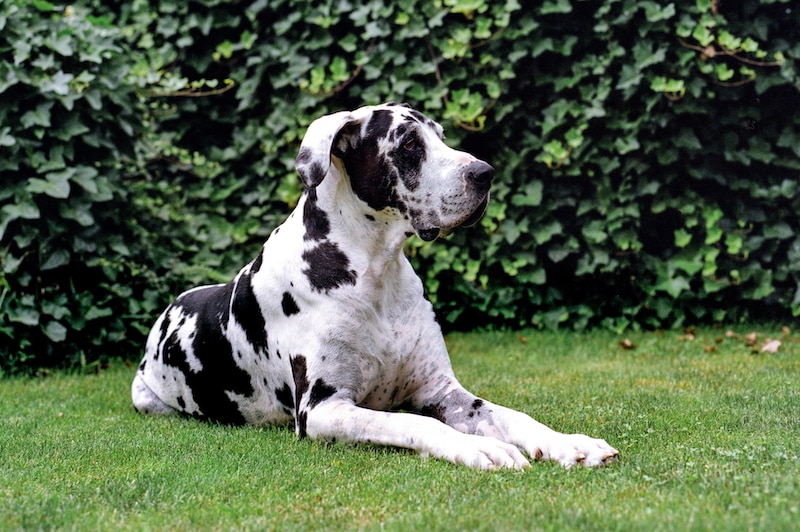
Great Danes are total softies at heart!
They’re easygoing, patient, and eager to please.
And despite what their towering height may lead you to think, these canines actually have minimal exercise requirements. They are couch potatoes and will get along great with laidback, quieter kids.
Great Danes are people-oriented and often don’t tolerate being alone for long periods. They also need plenty of mental stimulation to stop them from engaging in destructive habits, like excessive barking, scratching, or chewing.
Great Danes can be reserved around strangers, but they’re protective of their families.
Bloodhound
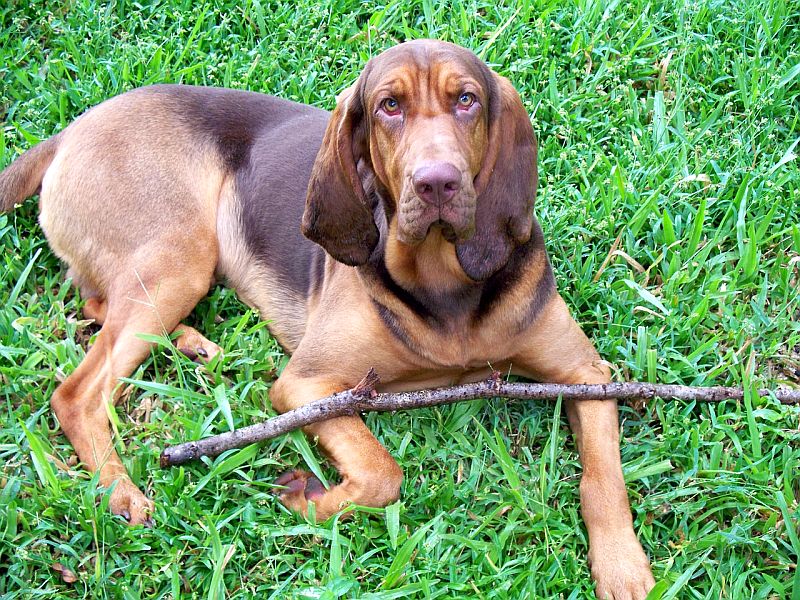
Bloodhounds are large hound dogs famous for their drooping ears, adorable wrinkles, and keen sense of smell. While these sniffers can be stubborn on a trail, they’re loyal, curious, and truly devoted to their families.
They’re also easygoing and nurturing, which makes them perfect chill buddies for kids.
Bloodhounds and bloodhound mixes are fairly stubborn and sensitive, so they need consistent training and plenty of encouragement.
Always stick to positive reinforcement based dog-training methods and use treats as a reward. With the right family, bloodhounds make loyal, gentle companions that’ll give kids lots of affection and attention.
St. Bernard
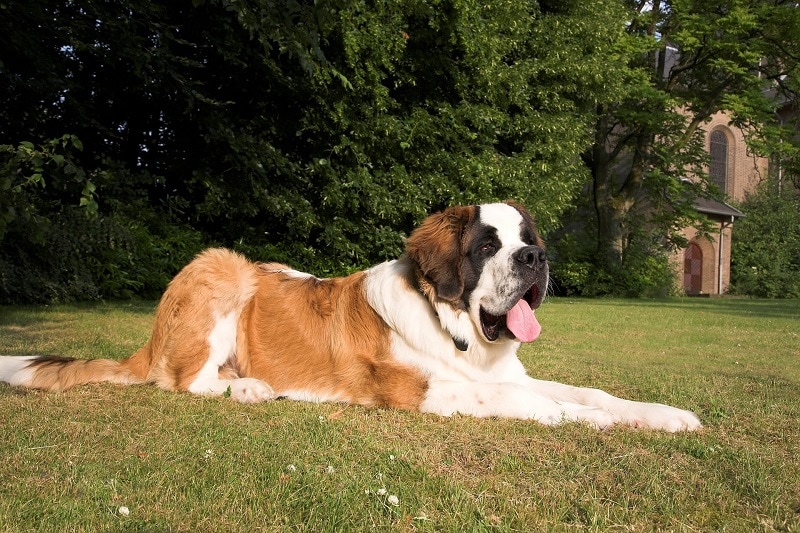
Think of a St. Bernard, and the first thing that probably enters your mind is the slobbering, chaotic pooch from the movie Beethoven. While these pooches are definitely… slobbery, their personalities are far from chaotic.
To the contrary, St. Bernards are gentle, calm, and incredibly nurturing dogs. They’re especially patient with children. In fact, they get along so well with kids, they’re often called “nanny dogs!” St. Bernards require an hour of exercise per day, as well as playtime and mental stimulation to thrive.
There are plenty of mixed canines in rescue shelters looking for a warm, loving home. However, if you do decide to opt for a mutt, it’s a good idea to first perform a DNA test.
Mixes inherit a combination of traits from their parents, so a test will give you a better understanding of their possible temperament, care requirements, and potential health issues.
Good Kid Dogs for Specific Circumstances
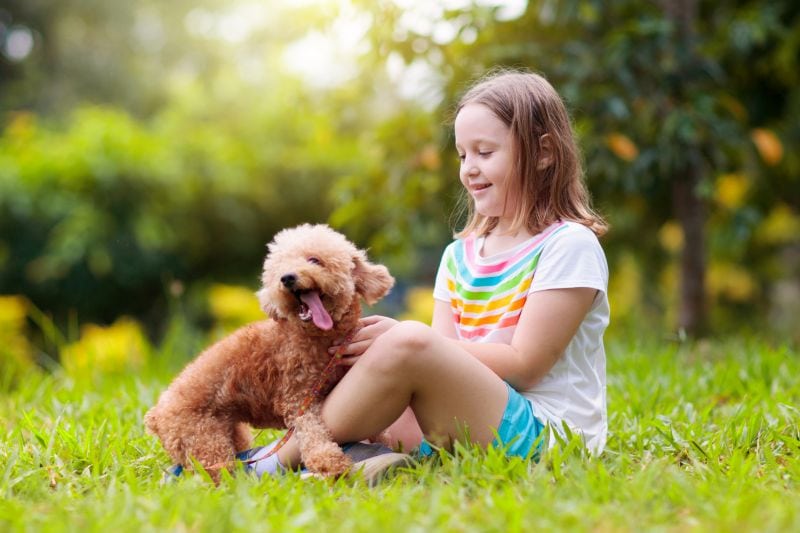
Whether you’re after a “hypoallergenic” dog or a breed that can help you feel protected, there’s sure to be a pooch that fits your specific needs!
- Best Hypoallergenic Dog for Kids: While no dog is truly hypoallergenic, there are breeds that are less likely to cause an allergic reaction. These pups shed minimally, meaning dander and saliva — the two main triggers — aren’t spread around the home as much as they are with some other breeds. The bichon frisé definitely comes out on top in this category (though poodles are another good choice). The bichon’s coat doesn’t shed as much as other breeds, and the curly texture traps loose hair and dander.
- Best Small Dog for Kids: The cavalier King Charles spaniel is incredibly gentle, comforting, and forms strong attachments to children. He’s also adaptable and loves to play! We’d consider the coton de Tulear a good runner-up, if the cavalier isn’t your cup of tea.
- Best Medium-Sized Dog for Kids: The Labrador retriever is an easy to train, energetic pooch that can play for hours on end without getting bored. He’s also patient, even-tempered, and sociable. Don’t like Labs? Consider a good ‘ol golden retriever — they’re nearly as awesome in the medium-sized category.
- Best Large Dog for Kids: The St. Bernard is called a “nanny dog” for a reason; his nurturing, watchful, and gentle demeanor makes him the perfect companion for kids of all ages. If a St. Bernard doesn’t feel right, the Newfoundland would be another contender for this title.
- Best Guard Dog for Kids: The boxer makes a great watchdog and is willing to protect his family, no matter the threat. He also forms close bonds with kids. And by virtue of size alone, the Great Dane is sure to dissuade any potential trouble makers from getting close to your kiddos.
- Safest Dog for Kids: The beagle is the undoubtedly one of the safest dogs for kids thanks to his calm, loving demeanor and small size. Other notable breeds that would be very safe for kiddos include the bichon and basset hound.
- Friendliest Dog for Kids: The golden retriever’s happy-go-lucky, sociable attitude is unrivaled. He makes friends with everyone he meets, including other strangers and pets! But once again, the beagle’s infectious personality makes him a contender for this crown.
- Best Kid Dog for First-Time Owners: The poodle is a great dog for first-time owners. He’s incredibly gentle around kids, loves to play and cuddle, and is also easy to train. The easy-going greyhound would also be a good choice.
What Makes a Dog Breed Good for Kids?
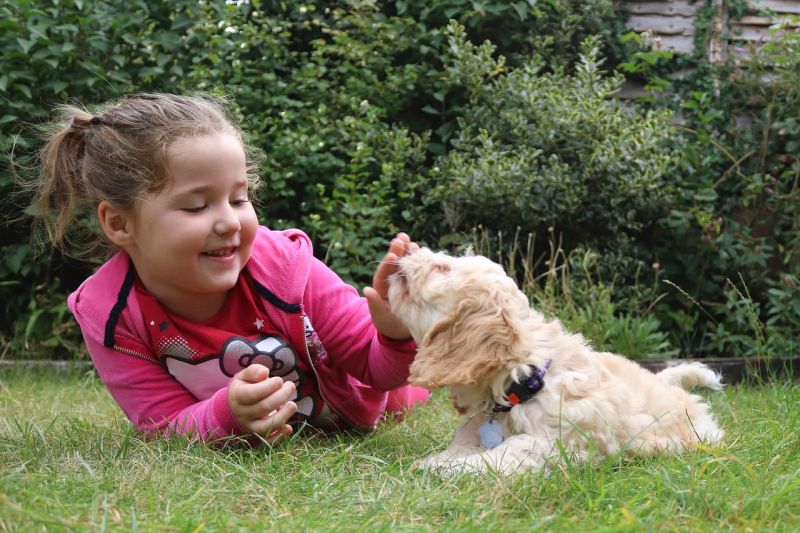
There’s plenty of factors that makes a dog breed good for kids. Some of the most notable traits that make a breed perfect for young kids include:
- An energy level that is compatible with your kiddos and your lifestyle. If your kids are active and love spending time outdoors, they’ll appreciate a playmate with plenty of energy and stamina, like the Labrador retriever. But if your kids prefer quiet movie nights? Then they’ll be more compatible with a laidback, affectionate breed, like the cavalier King Charles spaniel.
- Reasonable maintenance requirements. Looking after a dog can be tiring, especially on top of childcare. An easy-to-groom coat, minimal low shedding, and low to moderate exercise needs are all qualities that can help save you time and make your day-to-day life a little easier.
- A gentle and patient temperament. Unsurprisingly, dogs that are naturally gentle, friendly, and even-tempered are much more likely to be tolerant of kids, who can often be loud and rambunctious.
- An appropriate age (mature dogs are typically better than puppies). While puppies are cute and filled with enthusiasm about life, they can often be… too enthusiastic. Puppies are known to jump and bounce around, both behaviors that can potentially hurt small kids if they crash into them. Plus, housetraining presents obvious challenges.
- A tolerance for other pets. This is particularly important if you have a multi-pet household (or plan to in the future). If your kids have expressed interest in having other animals, like rabbits, cats, or birds, avoid dog breeds with a high prey drive.
- A people-oriented personality. Affectionate dogs who form strong attachments to their owners and are naturally eager to please, are more likely to be cautious and tolerant around kids. The chance of them lashing out, snapping, or biting is also extremely low.
- An easily trained nature. Kids often want to take part in training their new companion — a dog that can pick up commands quickly will make it easy for them to join in!
- Sturdy “construction.” Young children are boisterous, energetic, and sometimes get a bit carried away! If you do have young kids, consider a dog that’s sturdy and can handle rough play (and pats).
Teaching Children How to Interact with Dogs
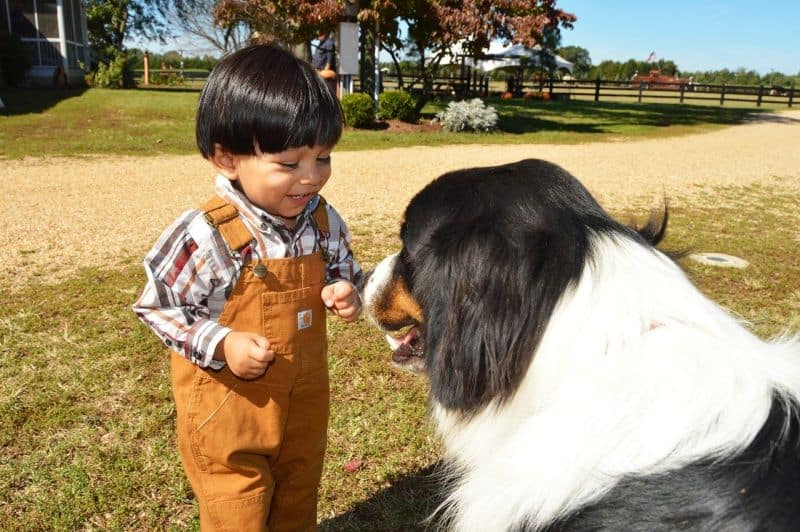
A dog will be a best friend your kids can always rely on. However, it’s important they know how to appropriately interact with their new companion. Otherwise, injuries and accidents are bound to happen!
Children Must Respect Dogs
While the best breeds for kids are generally patient and tolerant of small two-footers, every dog should be treated with respect. The Family Dog actually has a dedicated course that explains, in a kid-friendly manner, how to safely interact with dogs, and why it’s important to respect canines.
The course is run by Justine Schuurmans, who is CPDT-KA certified and a professional member of the APDT. She has been training dogs (and people!) for over 20 years and even established a dog safety campaign, known as “Stop the 77,” in 2015.
Children Should Not Be Left Unattended with Dogs
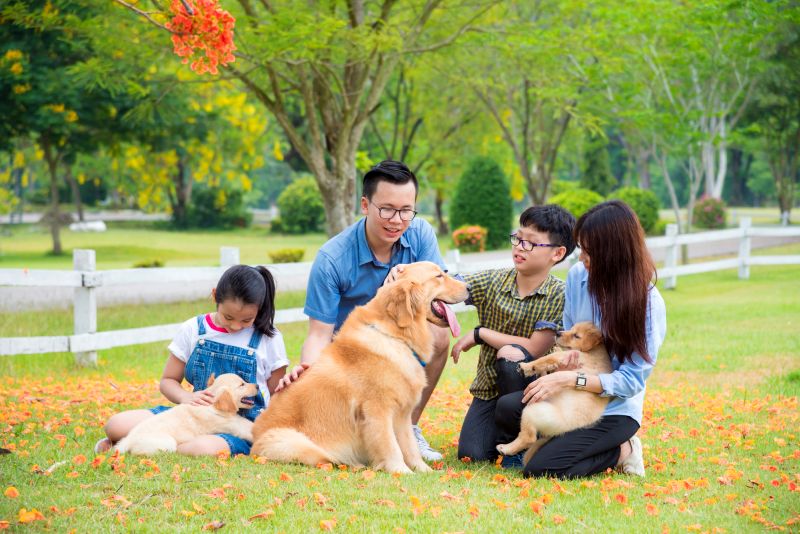
No matter how responsible you feel your kids are, you should never leave them unsupervised around dogs. Any canine, even the most even-tempered pooch, can accidentally injure a child, and the same goes for children injuring dogs.
Supervision also doesn’t mean just being in the same room with them —- you should be keeping a close eye on their interactions at all times.
Be Mindful of Germs
Dogs have a whole load of bacteria in their mouths, some of which can even cause nasty infections. It’s important that kids are mindful of these germs and are taught to:
- Wash their hands thoroughly after playing with a dog
- Not encourage dogs to lick around their face
- Keep wounds completely covered
- Not kiss animals
- Not touch dog waste with their bare hands
- Keep away from dogs while they’re eating
- Not put their hands in their mouth after touching a dog
Teach Your Children Not to Feed Dangerous Things to Dogs
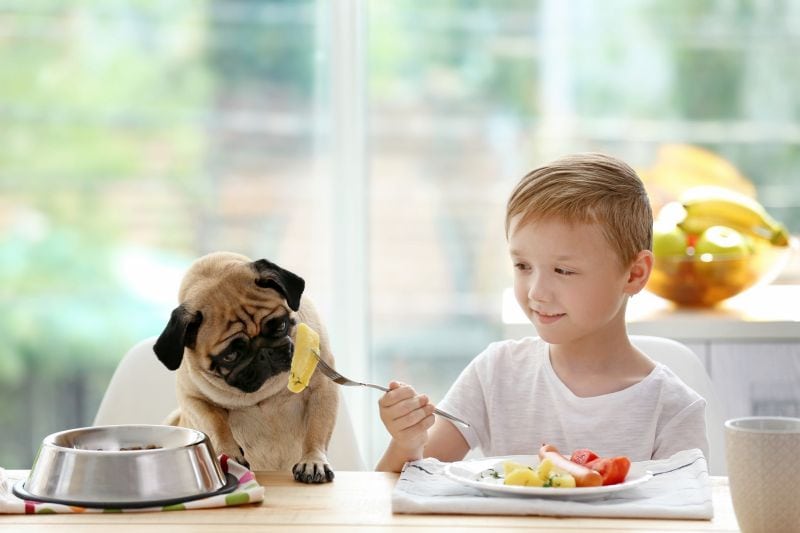
Dogs might have those irresistible puppy eyes, but it’s crucial your child knows to resist temptation. Items like shoes, human toys, and wipes can pose a choking hazard and even put dogs at risk of life-threatening intestinal blockages.
Giving dogs leftovers should also be off the table (pun intended). Many foods that are safe for human consumption aren’t safe for canines, and feeding them scraps can also encourage bad habits like counter surfing.
Teach Your Kids How Standard Dog Tools Work
Your kid is going to want to partake in every part of doggy care, so make sure they know how to properly and safely use tools like the leash, crate, collar, harness, clicker, and grooming brush.
If they want to get involved in feeding times, make sure they know your dog’s food schedule and also the appropriate amount of kibble to feed. Showing them how to use poo bags is also crucial, especially as this activity will help teach them about responsibility!
Introduce Your Child to Basic Dog Training
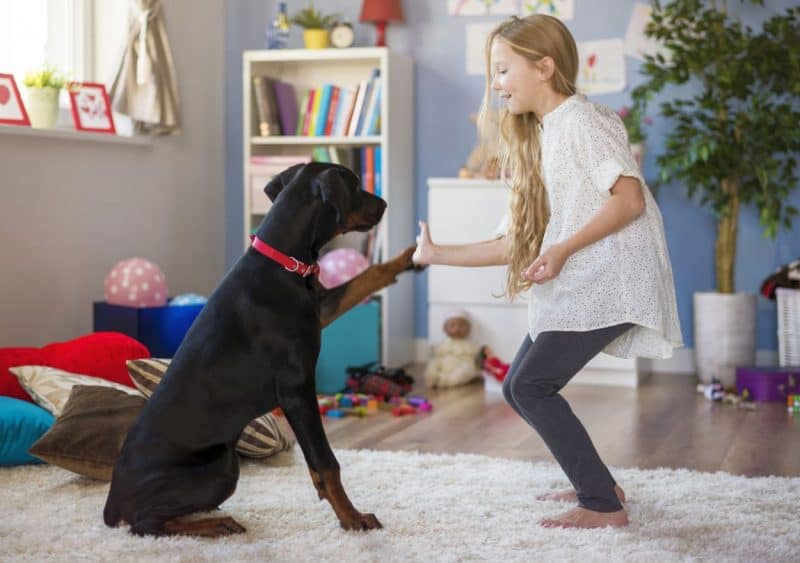
Dogs thrive on consistency, especially when it comes to training — if they’re told conflicting information, your dog will only become confused and not know how to act. That’s why it’s important to teach your kids proper dog training cues and commands and have them follow the same training rules you do for your dog.
Make sure kids are familiar with all the vital basic obedience cues, like “sit,” “stay” and “come,” and also show them how to incorporate treats and praise into training.
There’s plenty of breeds that would make a wonderful addition to homes with kids! Which is your personal favorite canine from our list? Or is there another pooch out there that you feel should have been included?
Let us know in the comments below!
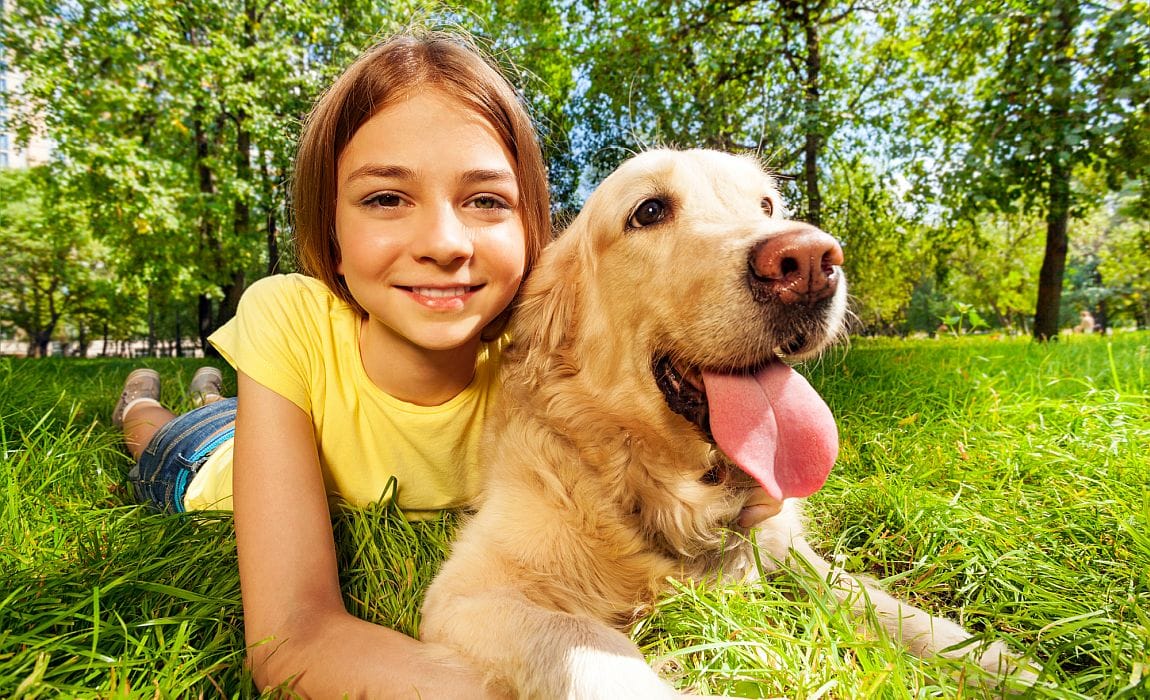

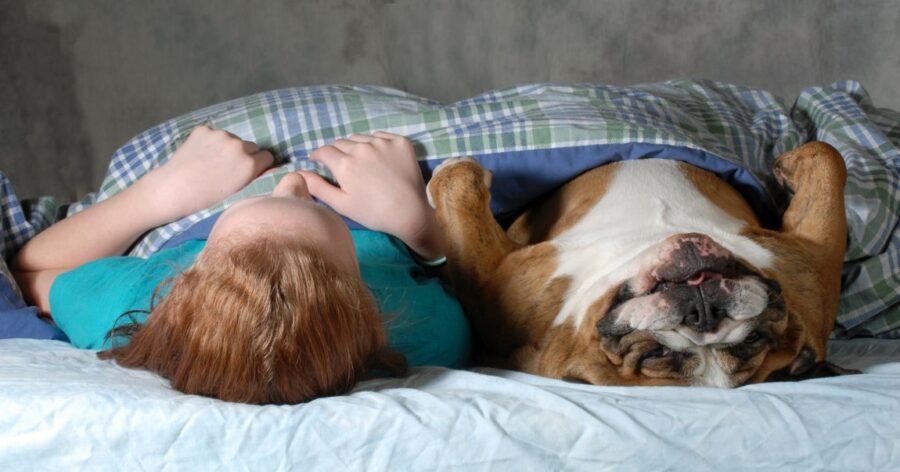


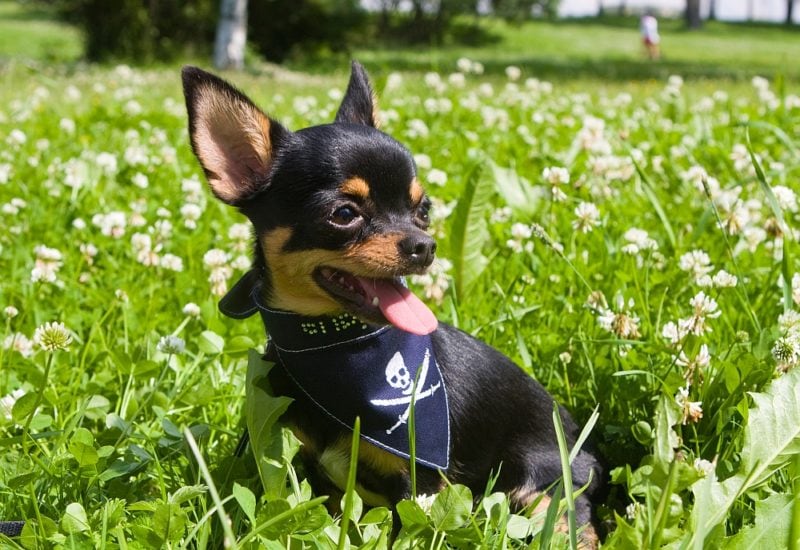

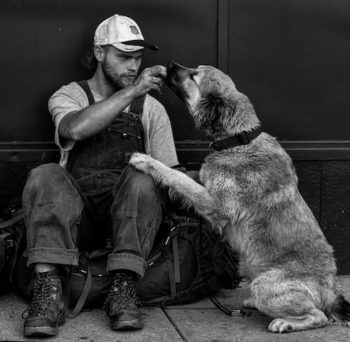
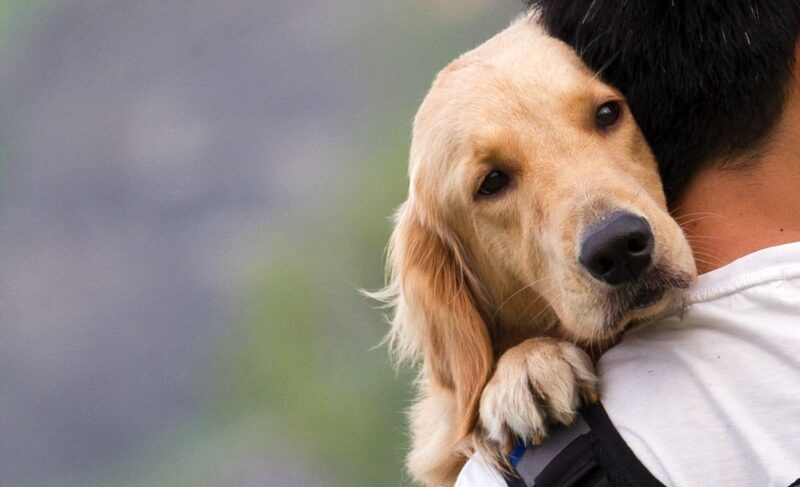

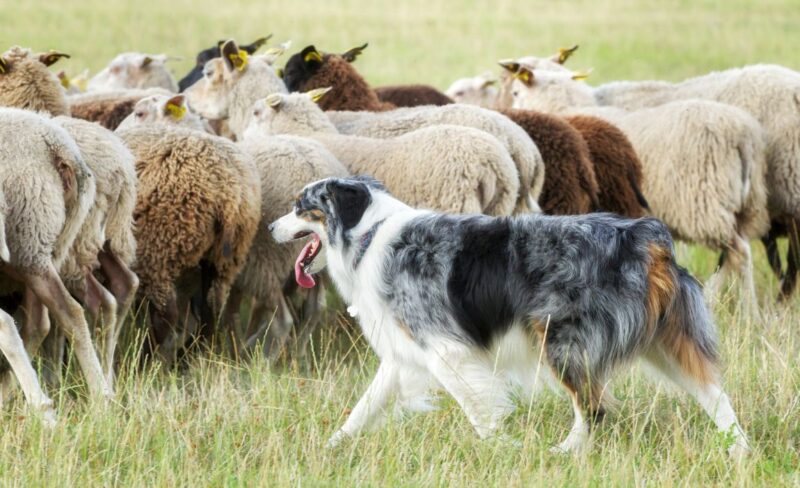
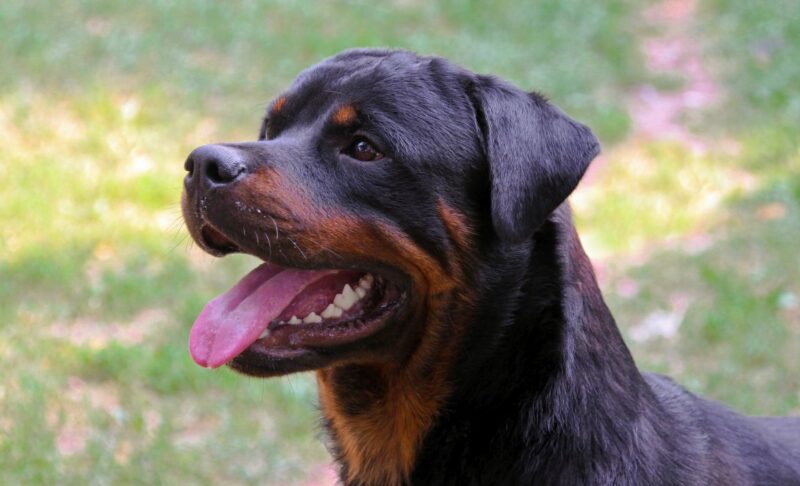

Leave a Comment